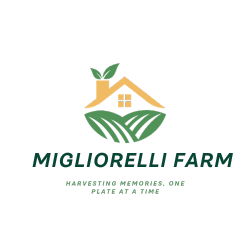In a world where the demand for sustainable and ethically sourced food is on the rise, farm-to-table dining has emerged as a culinary trend that not only satisfies the palate but also nourishes the conscience.
This article delves into the vibrant and flavorful world of farm-to-table dining, exploring the intricate relationship between local farmers and discerning chefs.
From the freshest ingredients to innovative culinary creations, join us as we uncover the beauty and benefits of savoring fresh flavors right in your own city.
Key Takeaways
- Farm-to-table dining offers a unique and immersive culinary journey, connecting diners with the land and agricultural traditions.
- Utilizing locally sourced ingredients supports the local economy and ensures freshness and quality.
- Using locally sourced ingredients supports organic farming practices and promotes sustainability.
- Locally sourced ingredients allow chefs to showcase the unique flavors and culinary traditions of the region.
The Rise of Farm-to-Table Dining
Farm-to-table dining has experienced a significant surge in popularity in recent years. As more people become conscious of the food they consume, the farm-to-table movement has gained momentum, attracting diners who seek a more authentic and sustainable dining experience. The popularity of farm-to-table dining can be attributed to several factors.
Firstly, consumers are becoming increasingly aware of the importance of supporting local farmers and businesses. By choosing farm-to-table restaurants, they are not only enjoying fresh and seasonal produce, but also contributing to the local economy. This sense of community connection is appealing to many diners, who value the traceability and transparency that farm-to-table dining offers.
Secondly, the farm-to-table movement aligns with the growing interest in healthy and nutritious food. Locally sourced ingredients are often harvested at their peak ripeness, ensuring maximum flavor and nutritional value. This focus on quality ingredients resonates with health-conscious individuals who prioritize fresh, unprocessed foods.
Lastly, the farm-to-table dining experience offers a unique and immersive culinary journey. Diners can enjoy dishes that showcase the region’s agricultural heritage and traditions, allowing them to connect with the land and the people who cultivate it.

Locally Sourced Ingredients: A Chef’s Perspective
From a chef’s perspective, utilizing locally sourced ingredients offers a multitude of benefits.
Not only does it support the local economy, but it also ensures that the ingredients are fresh and of the highest quality.
This allows chefs to create seasonal menu offerings that highlight the flavors and diversity of the region, providing diners with a unique and memorable dining experience.
Farm-To-Fork Benefits
When considering the benefits of farm-to-fork dining, chefs have long recognized the value of using locally sourced ingredients in their culinary creations. By utilizing ingredients that are grown or produced nearby, chefs are able to prioritize freshness and quality, resulting in vibrant and flavorful dishes.
One of the main advantages of using locally sourced ingredients is the ability to support organic farming practices. By working closely with local farmers, chefs can ensure that their ingredients are grown without the use of harmful pesticides and chemicals, promoting a more sustainable and environmentally friendly approach to food production.
Additionally, sourcing from local farms encourages the development of community supported agriculture, fostering a sense of connection and support between chefs, farmers, and consumers. This collaboration not only benefits the local economy but also allows for a greater understanding and appreciation of the food we eat.
Seasonal Menu Creations
By carefully selecting and incorporating locally sourced ingredients into their seasonal menu creations, chefs are able to showcase the unique flavors and culinary traditions of the region. Menu inspiration comes from the abundance of fresh, seasonal ingredients that are available in the local area. Chefs have the opportunity to create dishes that highlight the flavors of each season, using ingredients that are at the peak of freshness. This not only enhances the taste of the dishes but also supports local farmers and promotes sustainability.
Seasonal ingredients provide chefs with a diverse range of flavors and textures to work with, allowing them to craft innovative and exciting dishes. The use of locally sourced ingredients also adds a sense of authenticity and connection to the local community, as customers can experience the true taste of the region.
Exploring Sustainable Farming Practices
Implementing sustainable farming practices is crucial for ensuring the long-term health and viability of our agricultural systems. With the growing concern over the environmental impact of conventional farming methods, it has become imperative to explore sustainable farming techniques and promote organic food production.
Sustainable farming techniques focus on minimizing the use of synthetic fertilizers, pesticides, and genetically modified organisms (GMOs). Instead, farmers adopt practices that promote soil health and biodiversity, such as crop rotation, cover cropping, and integrated pest management. These techniques not only reduce the negative impact on the environment but also contribute to the production of healthier and more nutritious crops.
Organic food production is an integral part of sustainable farming practices. Organic farmers prioritize the use of natural fertilizers, like compost and manure, and avoid the use of synthetic chemicals. They also prioritize the welfare of animals, ensuring they have access to outdoor areas and are fed organic diets.
Farm-to-Table Restaurants: A Guide for Foodies
Farm-to-table restaurants have gained popularity among food enthusiasts due to their commitment to using locally sourced ingredients and providing sustainable dining options. These establishments prioritize supporting local farmers and reducing their carbon footprint by offering seasonal menus that showcase the freshest produce, meat, and dairy products.
For foodies who value quality, transparency, and environmental consciousness, farm-to-table restaurants offer a delightful dining experience that connects them to the local food community and promotes a more sustainable food system.
Locally Sourced Ingredients
Restaurants that prioritize locally sourced ingredients contribute to the sustainability and freshness of their dishes, as well as support the local farming community. By sourcing their ingredients from nearby community gardens and urban farms, these restaurants not only reduce their carbon footprint but also ensure that the produce used in their dishes is of the highest quality.
Locally sourced ingredients are often picked at the peak of their freshness, resulting in dishes that burst with flavor and nutrients. Moreover, by supporting local farmers and growers, these restaurants contribute to the economic development of their communities. They help create a thriving local food system that benefits everyone involved, from the farmers who receive fair compensation for their hard work to the diners who can enjoy delicious meals made with fresh, sustainable ingredients.
Sustainable Dining Options
Promoting environmental stewardship and supporting local agriculture, sustainable dining options offer foodies a chance to indulge in guilt-free culinary experiences. These dining establishments prioritize organic farming practices and prioritize community-supported agriculture, ensuring that the ingredients used in their dishes are fresh, locally sourced, and free from harmful chemicals.
By utilizing organic farming methods, these restaurants contribute to the preservation of the environment, promoting soil health and biodiversity. Additionally, they support community-supported agriculture, which strengthens the local food system and connects consumers directly with farmers.
This not only ensures the traceability and transparency of the ingredients but also fosters a sense of community and trust. With sustainable dining options, foodies can enjoy delicious meals while knowing that they are making a positive impact on the environment and supporting local farmers.
Signature Dishes Showcasing Local Flavors
Highlighting the vibrant culinary heritage of the region, local chefs have crafted exquisite dishes that celebrate the abundance of fresh ingredients available in your city. These signature dishes not only showcase the unique flavors of the locality but also represent the creativity and passion of the chefs who prepare them.
One way to experience these delightful creations is by attending local food festivals, where you can indulge in a variety of dishes that have been influenced by the region’s culture and traditions. These festivals provide a platform for chefs to showcase their culinary expertise and offer visitors a chance to sample a wide range of local flavors in one place.
Another way to savor the local flavors is through farm-to-table wine pairings. With an emphasis on using locally sourced ingredients, these dining experiences offer a unique opportunity to taste the freshest produce and explore the flavors that define the region. From expertly grilled meats paired with bold red wines to delicate seafood dishes complemented by crisp whites, these farm-to-table wine pairings elevate the dining experience and allow you to truly appreciate the local flavors in a new light.
Supporting Local Farmers: A Win-Win for Communities

The community’s commitment to supporting local farmers, as well as fostering economic growth, is a win-win for everyone involved. By choosing to buy locally grown produce and products, communities can have a direct impact on the success and sustainability of their local farmers. Here are four reasons why community support for local farmers is so important:
- Economic Impact: Supporting local farmers helps to stimulate the local economy. When consumers buy directly from farmers, the money stays within the community, creating jobs and fostering economic growth. This support allows farmers to invest in their operations, upgrade equipment, and expand their businesses, ultimately benefiting the entire community.
- Environmental Benefits: Local farmers often practice sustainable farming methods, which have a positive impact on the environment. By supporting these farmers, communities can play a role in reducing carbon emissions, preserving biodiversity, and promoting healthier ecosystems. This commitment to sustainable agriculture helps to create a more environmentally conscious community.
- Fresh and Nutritious Food: Buying from local farmers ensures that communities have access to fresh and nutritious food. Local produce is often harvested at its peak ripeness, meaning it is packed with flavor and nutrients. By supporting local farmers, communities can enjoy the freshest ingredients while also promoting healthier eating habits.
- Preserving Farmland: When communities support local farmers, they help to preserve valuable farmland. Encouraging the growth and success of local farming operations prevents urban sprawl and preserves the scenic beauty of rural areas. By supporting local farmers, communities can help protect their region’s agricultural heritage for future generations.
Farm-to-Table Dining: How to Bring the Experience Home
Embracing farm-to-table dining at home allows individuals to elevate their culinary experiences and savor the freshness of locally sourced ingredients. Bringing the farm-to-table experience to your backyard is not only a great way to support local farmers, but it also allows you to enjoy the benefits of eating fresh, seasonal produce right at home.
Incorporating local produce in home-cooked meals adds a vibrant and flavorful twist to your dishes. By sourcing ingredients from nearby farms, you can ensure that you are getting the highest quality produce that is picked at the peak of ripeness. This not only enhances the taste and texture of your meals but also provides you with the opportunity to explore new flavors and experiment with different cooking techniques.
To bring the farm-to-table experience home, start by visiting your local farmers’ market or joining a community-supported agriculture (CSA) program. This allows you to connect directly with local farmers and have access to a wide variety of fresh produce. Get to know your farmers and ask about their farming practices to ensure that you are supporting sustainable and ethical farming methods.
Once you have your fresh ingredients, let them shine in simple and wholesome recipes. Opt for dishes that highlight the natural flavors of the ingredients, such as salads, roasted vegetables, or grilled meats. Experiment with different combinations and let the freshness of the produce be the star of the show.
Bringing farm-to-table dining into your own home is a rewarding experience. Not only does it support local farmers and promote sustainability, but it also allows you to create delicious meals that celebrate the flavors of your community. So go ahead, embrace the farm-to-table movement and enjoy the benefits of incorporating local produce in your home-cooked meals.
Frequently Asked Questions
How Do Farm-To-Table Restaurants Contribute to the Local Economy?
Farm-to-table restaurants play a vital role in the local economy by supporting local farmers and producers. These establishments prioritize sourcing ingredients locally, which not only strengthens the community but also stimulates economic growth and sustainability.
Are There Any Health Benefits Associated With Consuming Locally Sourced Ingredients?
What are the health benefits of consuming locally sourced ingredients? Locally sourced ingredients often have higher nutrient levels, fewer chemicals, and are fresher. This can contribute to better overall health and well-being. Additionally, supporting local agriculture helps reduce the environmental impact of transporting food long distances.
How Can I Find Farm-To-Table Restaurants in My City?
Finding farm-to-table restaurants in your city is a delightful way to indulge in fresh flavors. Start by exploring local farms and farmers markets, where you can discover a variety of establishments committed to sourcing ingredients locally.
What Are Some Common Sustainable Farming Practices Used in Farm-To-Table Dining?
Some common sustainable farming practices used in farm-to-table dining include regenerative agriculture and organic farming. These practices prioritize soil health, biodiversity, and the reduction of synthetic inputs, resulting in high-quality, nutritious, and environmentally friendly ingredients for farm-to-table restaurants.
Are There Any Tips for Incorporating Farm-To-Table Principles Into My Own Cooking at Home?
Incorporating farm-to-table principles into home cooking involves utilizing farm-fresh ingredients, embracing seasonal produce, and exploring various cooking techniques that showcase the natural flavors and textures of the ingredients.
Conclusion
Farm-to-table dining has become a popular trend in cities across the country, offering a fresh and sustainable approach to culinary experiences. With a focus on locally sourced ingredients and sustainable farming practices, these restaurants not only provide delicious meals but also support local farmers and communities.
From signature dishes that showcase the flavors of the region to the opportunity to bring the farm-to-table experience home, this dining trend offers a win-win for foodies and the environment alike. It’s a culinary adventure worth savoring.

